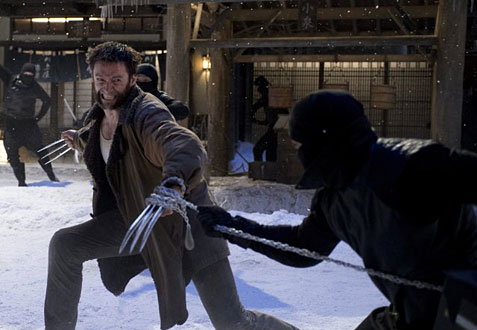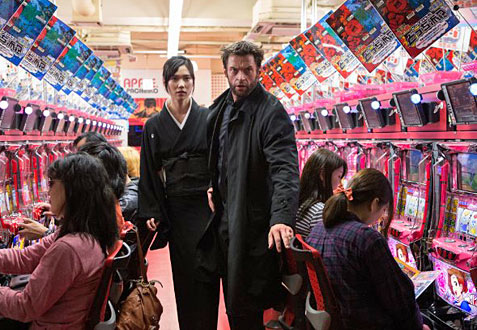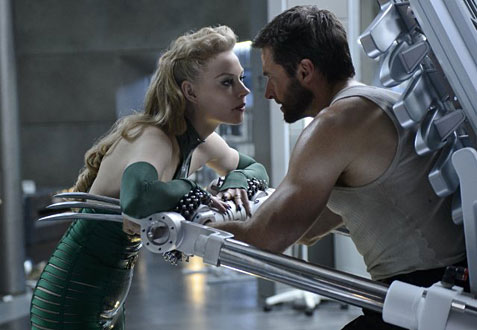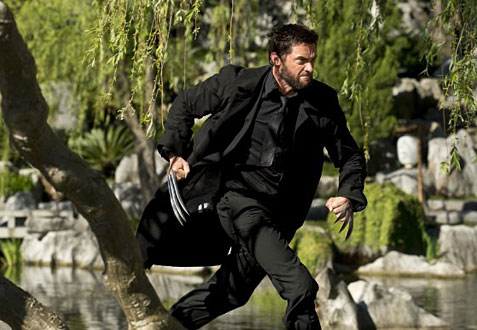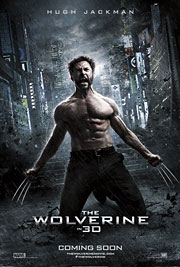



Hugh Jackman has been pretty vocal about atoning for the disappointment of “X-Men Origins: Wolverine” with his latest (and sixth) appearance as the popular mutant, but while “The Wolverine” is a slight improvement on the character’s first solo outing, it’s kind of like giving someone a less bruised piece of fruit and expecting them to be grateful for it. Though director James Mangold should be applauded for trying to do something different with a superhero movie, it’s still plagued by some of the same problems (and a few new ones, as well), ultimately resorting to an all-too-familiar formula in the end. As a character piece, “The Wolverine” is Jackman’s best performance in the role, but as a summer blockbuster, it fails to deliver the Wolverine that audiences want to see.
Loosely based on the much-loved miniseries by Chris Claremont and Frank Miller, the film picks up sometime after the events of “X-Men: The Last Stand,” with Logan (Jackman) now living in the woods like an animal and haunted by visions of Jean Grey (Famke Janssen), the woman he loved but was forced to kill. His past catches up to him once again when a mysterious Japanese girl named Yukio (Rila Fukushima) comes to whisk Logan away to Tokyo to pay his respects to her master, Yashida (Hal Yamanouchi), a dying billionaire whose life he once saved as a young soldier during the 1945 bombing of Nagasaki. Yashida claims to have the technology to free Logan of his so-called curse and transfer his mutant powers to someone else, but when he refuses and the old man dies shortly after, Logan reluctantly agrees to protect Yashida’s granddaughter Mariko (Tao Okamoto) from the local yakuza, despite losing his coveted healing ability after he’s poisoned by an evil, snake-like mutant called Viper (Svetlana Khodchenkova).
The idea of setting the story around Wolverine’s struggle with his own immortality was a smart decision, because it not only allowed Mangold to make a more intimate, smaller-scale comic book movie (and one that plays to his strengths as a director), but it gives Jackman room to explore the more human side of Wolverine. While it’s nice to see Logan trying to cope without his healing factor for a change, however, you pretty much know how it’s going to end. After all, a mortal Wolverine isn’t Wolverine at all, and although the film gets off to a strong start, once Logan and Mariko go on the run, it begins to drag. Mangold attempts to break up these quieter, character-driven moments with big action sequences, but with the exception of a cool fight scene atop a speeding bullet train, the rest of the action is terribly bland, especially the CG-driven final act that even bastardizes one of the key characters from Claremont and Miller’s original story.
For as much flak as its predecessor received, “The Wolverine” isn’t much better. As noted above, major liberties have been taken with the source material, and there are so many different villains in the story, each one with his/her own agenda, that none of them are properly developed. Jackman is still a lot of fun to watch as the title character, but the rest of the cast (save perhaps Fukushima’s bright red-haired warrior) leaves much to be desired. At times, even Wolverine himself proves to be a little dull, like when he’s busy moping about Jean Grey, whose appearance here is totally unnecessary.
This was supposed to be a standalone adventure for Wolverine, and yet writers Mark Bomback and Scott Frank can’t help but muddy the waters with references to the X-Men, including a mid-credits sting at the end of the movie that admittedly shouldn’t be missed. “X-Men Origins: Wolverine” and “X-Men: First Class” already did a pretty good job of making a hash of the cinematic timeline, and by directly tying “The Wolverine” to those films, it doesn’t help matters. It’s an enjoyable addition to the X-Men series thanks mostly to Jackman’s involvement, and it will probably age more gracefully than his last outing, but it’s hardly the definitive Wolverine movie that fans were promised.



